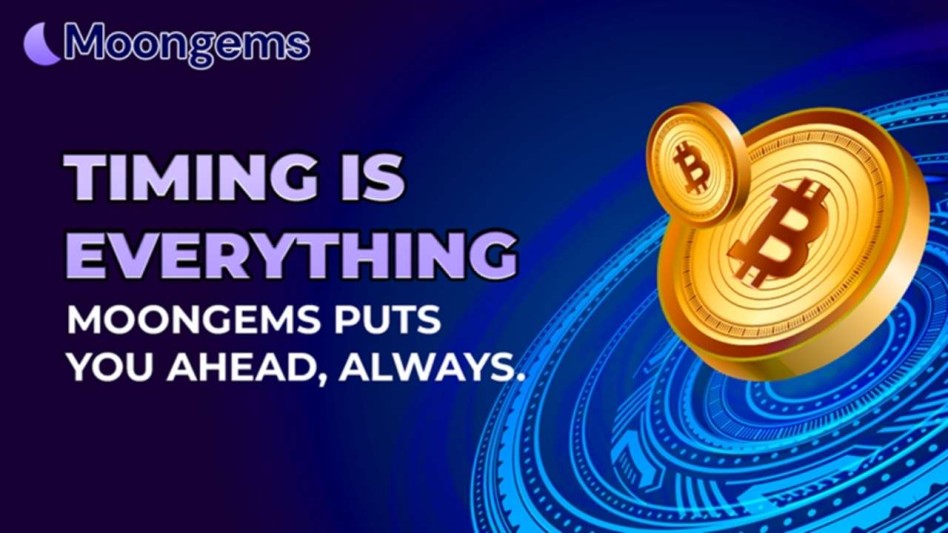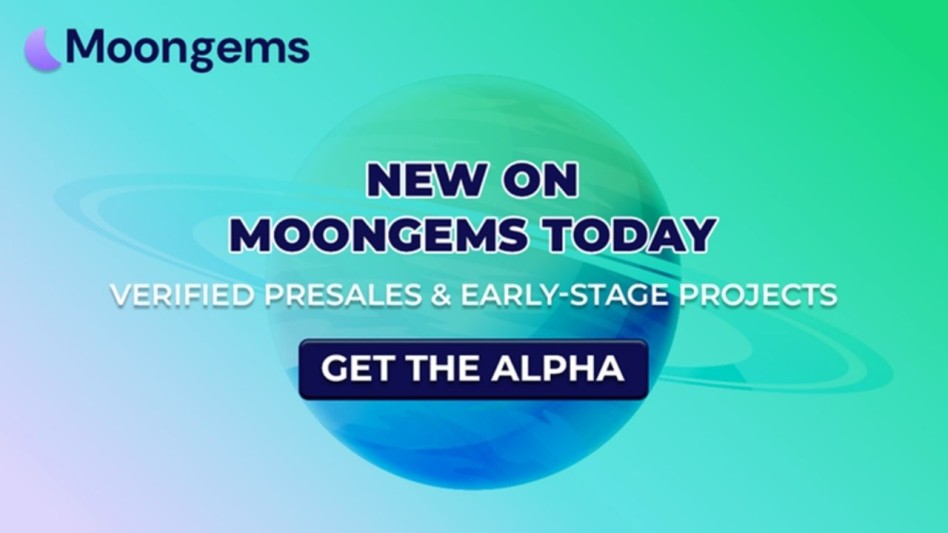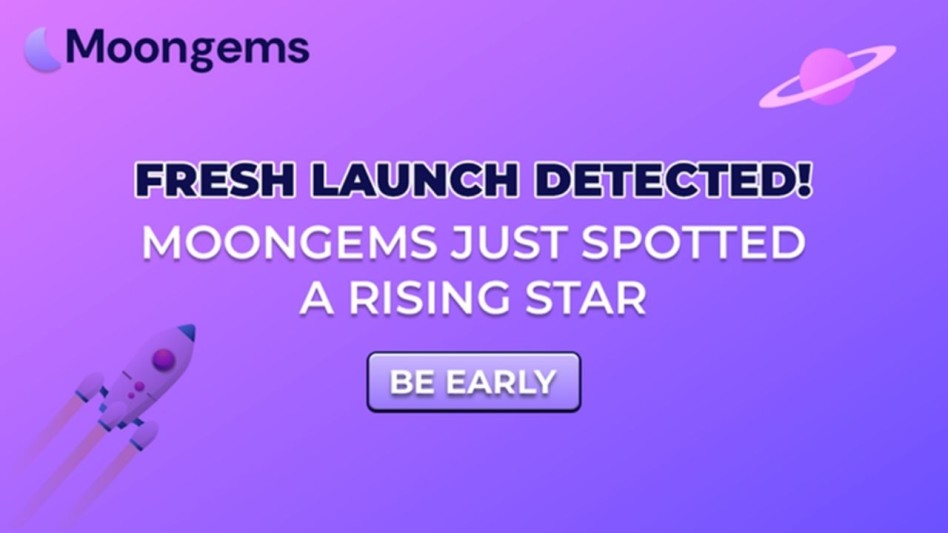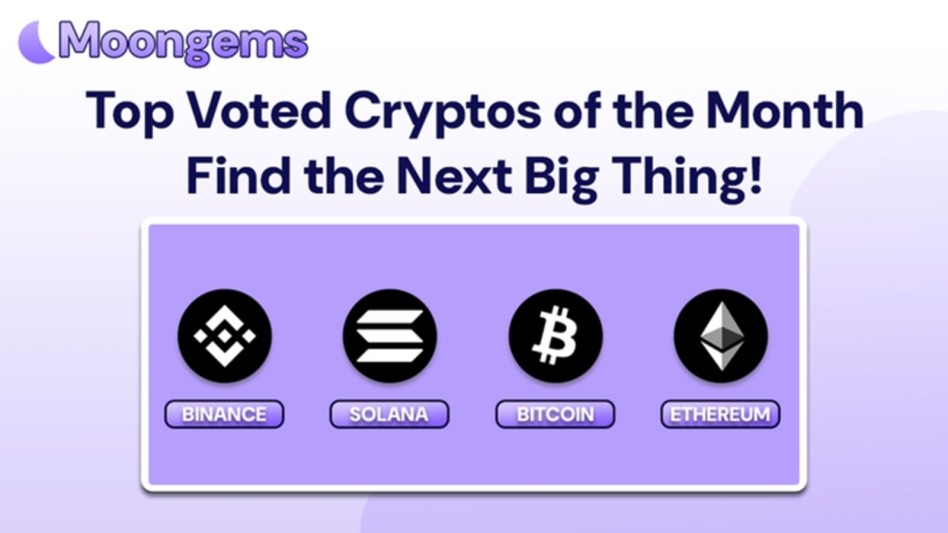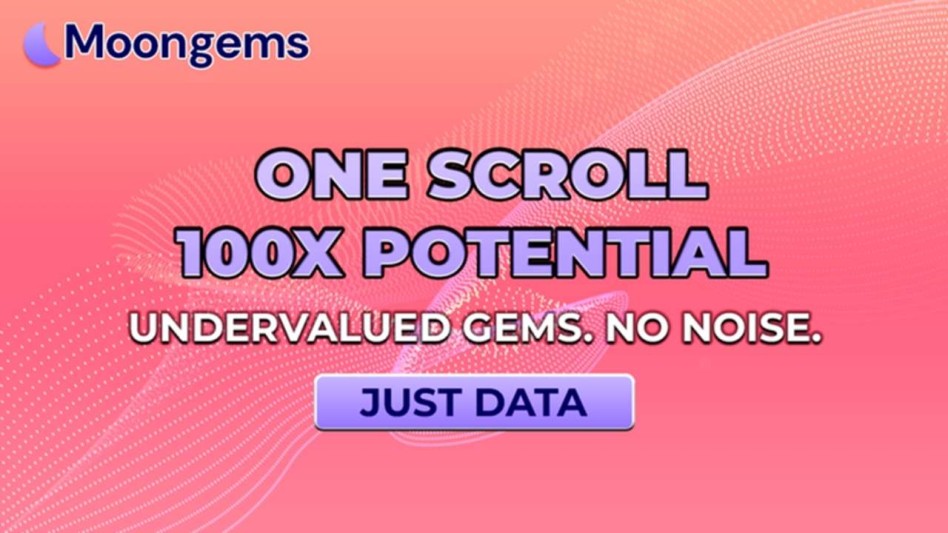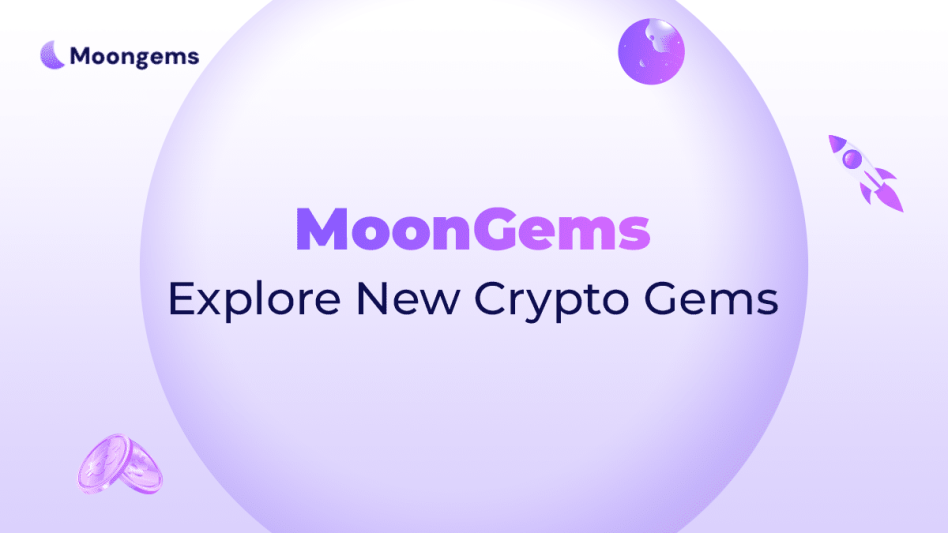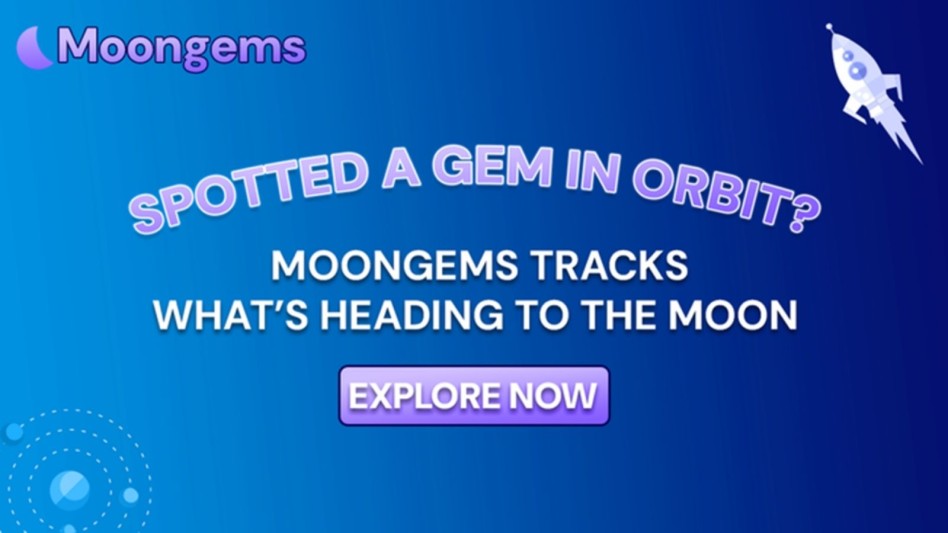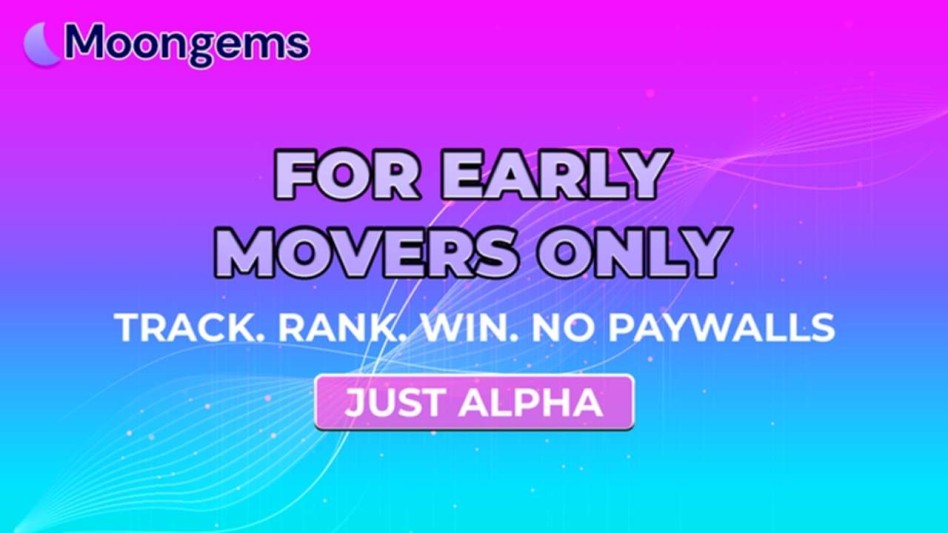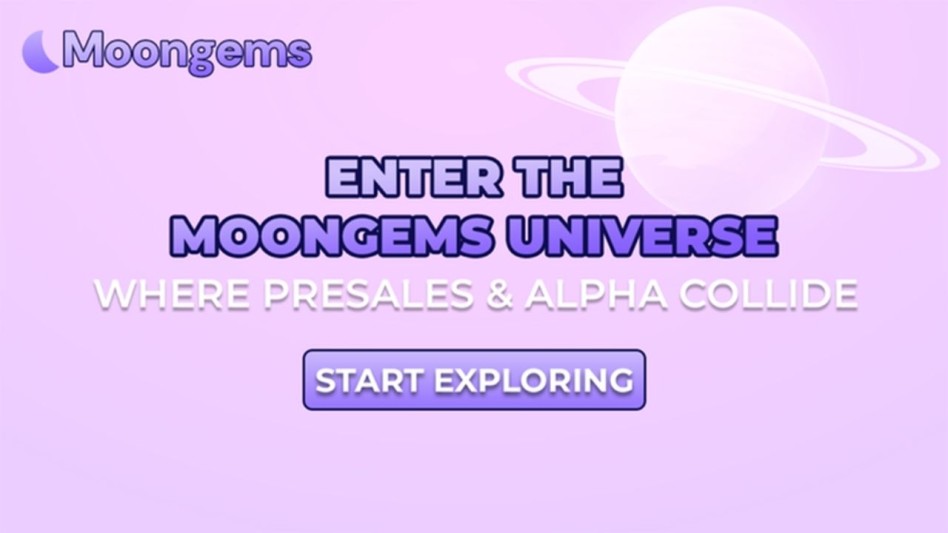Author: Jawad Hussain – Crypto Analyst & Web3 Researcher | 9+ years tracking presales, IDOs, and token launches. Follow him on Twitter and LinkedIn.
In the fast-moving world of crypto, early-stage investments are often driven by one thing: potential. But what separates a token that pumps and dumps from one that sustains value? The answer, more often than not, is utility.
Utility isn’t just a buzzword—it’s a core foundation of every legitimate crypto project. It answers the question: Why does this token exist? If the only answer is "to make people rich," you're not holding a financial instrument—you're holding a ticking time bomb.
As the presale market matures in 2025, more investors are waking up to this fact. Platforms like MoonGems are at the forefront of this shift, highlighting projects where token utility isn't just a marketing point, but a functional part of the ecosystem.
This guide will explore how token utility creates real demand, sustains post-launch price action, and fuels organic adoption. Whether you’re analyzing a DeFi platform, a GameFi project, or a DAO governance token, this article will show you how MoonGems evaluates utility as a key ROI driver.
Let’s examine why use cases are no longer optional in presales and how to separate hype from genuine value.
1. What Is Token Utility and Why Does It Matter?
Token utility refers to a token's functional role within its native ecosystem. This could include accessing features, paying fees, staking, voting, earning rewards, or unlocking digital goods. Without utility, a token has no inherent reason to exist beyond speculation.
In the early days of crypto, speculation alone was enough to send token prices soaring. But investors are demanding more in today’s more cautious and regulated market. MoonGems tracks dozens of presale projects daily, and the ones that survive post-launch all have one thing in common: their tokens do something.
Utility creates demand. Demand creates usage. Usage drives volume. And volume keeps the token relevant, even during market downturns. It’s no longer about “when Binance?”—it’s about “what’s the point of holding this token in the first place?”
If the answer is unclear, MoonGems moves on. We recommend you do the same.
2. Types of Token Utility You Should Look For
Not all utility is created equal. Some use cases are gimmicky or easily replaced. Others are deeply embedded into the platform’s functionality. At MoonGems, we prioritize tokens with the following types of built-in utility:
Access Utility
Tokens that unlock features, content, or platform privileges. For example, governance tokens that give holders voting rights or GameFi tokens that provide in-game advantages.
Payment Utility
Tokens are used to pay fees within a platform, such as gas for transactions, subscription fees, or service access. These often create cyclical demand as user adoption increases.
Staking Utility
Tokens that generate passive income when locked in smart contracts. This utility attracts long-term holders if APY is sustainable and backed by revenue.
Reward Utility
Tokens earned through gameplay, participation, or referrals. These models incentivize ecosystem activity and increase daily active users.
Governance Utility
Tokens that grant voting rights on development decisions or protocol upgrades. This builds community ownership and long-term engagement.
MoonGems uses a weighted scoring model to evaluate how strongly a token’s utility impacts the platform’s health. The deeper the integration, the more valuable the token.
3. Real-World Examples of Strong Utility Models
To understand what strong token utility looks like, we can examine real case studies—many of which MoonGems has tracked over the years.
- Uniswap’s UNI token provides governance rights. While not essential to using the platform, it gives long-term holders influence over treasury and upgrades.
- Chainlink’s LINK token is used to pay for Oracle data and secure network participation. It is directly and continuously demanded by DeFi protocols that need reliable off-chain data.
- Stepn’s GMT token allowed players to earn while walking and buy in-game NFTs. Although its hype faded, MoonGems highlighted its early-stage potential due to the strong utility loop it created during its initial adoption phase.
These examples show that token price isn't just about listing or hype—it’s about what the token enables. MoonGems prioritizes presale listings that follow this logic, not just those with big marketing budgets.
4. Red Flags: Utility That Sounds Good But Doesn’t Deliver
Some presale projects slap on a use case to appear legitimate, but a closer look reveals the utility is surface-level or easily bypassed. Here’s how MoonGems spots bad-faith or low-impact utility:
Utility that’s not exclusive
If users can access all platform features without holding the token, what’s the point of the token?
“Future utility” promises with no timeline
“Governance coming soon,” “utility added in Q5,” or “burns once CEX listings happen” are red flags.
Token as a placeholder
If the token’s only use is to trade or flip, and there's no function tied to platform activity, it’s speculation in disguise.
Unsustainable staking
Offering 1,000% APY without revenue backing is not utility—it’s exit liquidity waiting to collapse.
MoonGems filters out projects that rely on fake, forced, or shallow utility. If it’s not part of the product experience, it’s not a real use case.
5. How Token Utility Impacts Presale ROI
One of the most overlooked aspects of token utility is its impact on ROI beyond the first 48 hours of launch. Many tokens pump on listing and then crash because they were only fueled by hype. But tokens with strong utility see repeat usage, consistent trading volume, and ecosystem stickiness.
Here's how MoonGems correlates utility strength with ROI performance:
- Tokens with embedded platform utility (e.g., access or payment) tend to have 20–50% longer price stability post-launch
- Staking and reward-based tokens often see lower short-term volatility due to lock-up behavior
- Governance utility, when well-structured, increases community participation and project loyalty, extending investor holding periods
In essence, utility reduces churn. And MoonGems data shows that lower churn means stronger price floors, better retention, and higher secondary-market interest.
Utility isn’t just a feature—it’s a price support system.
6. How MoonGems Evaluates Utility in Presales
Utility is a key pillar of the MoonGems vetting process. Before featuring a project, we use a multi-criteria model to assess the token’s use case, asking:
- Does the token have immediate post-launch functionality?
- Is it required for core platform operations?
- Are there mechanics (burns, staking, rewards) that drive repeat demand?
- Can the utility scale with user adoption?
MoonGems assigns a utility strength score, which is factored into our overall risk/reward ranking. We also conduct founder interviews and community AMA sessions to pressure test the claims made about token usage.
In short, we don’t just believe the pitch—we verify the mechanics.
7. Utility Tokens vs Pure Governance or Meme Tokens
It’s important to distinguish between utility tokens and those that are primarily governance-focused or meme-driven. While governance can be a form of utility, it often requires a well-developed protocol and community to be effective.
Meme coins, on the other hand, often lack any form of built-in utility—unless gamified, staked, or tied to real-world access. MoonGems occasionally features meme tokens, but only if they include sustainable mechanics that reduce reliance on hype alone.
Utility tokens tend to:
- Hold better during corrections
- Attract partners and integrations
- Justify longer vesting timelines
- Benefit from usage-based burn cycles
MoonGems ranks utility tokens higher in our ROI projection models because demand from usage outpaces speculation in the long run.
Conclusion
Utility is no longer optional—it’s the deciding factor between tokens that moon and those that vanish. In the presale world, strong token utility is a magnet for investors and users, pulling in demand and supporting value over time.
MoonGems has spent years tracking early-stage launches. And one lesson repeats across every cycle: if a token doesn’t do something, it won’t do anything. No listing hype, influencer campaign, or fancy roadmap can replace real functionality.
If you're serious about ROI, ask harder questions about how tokens are used, not just how they're priced. And if you're looking for presales that pass the utility test, look no further than the listings, audits, and breakdowns available at MoonGems.
Because in 2025, use case is king, and MoonGems is your kingdom map.
Frequently Asked Questions
- What is token utility in crypto?
It’s the practical use of a token within its native platform, such as paying fees, staking, or accessing features. - Why is utility important in presales?
Utility drives demand and usage, which supports long-term value and price stability post-launch. - Can meme tokens have utility?
Yes—if they integrate staking, governance, or platform access. MoonGems highlights such hybrid models. - How does MoonGems score utility strength?
We evaluate integration, scalability, and the token’s role in product functionality—not just what’s promised. - What’s the difference between staking and real utility?
Staking is one form of utility, but it must be sustainable and not just inflated APY with no use case backing it. - Do all good presales need utility?
Absolutely. MoonGems does not feature any token that lacks at least one verifiable use case. - Can the utility change post-launch?
Yes—but that’s risky. MoonGems prefers presales where utility is already coded into the launch or v1 product rollout.
Glossary of Key Terms
- Token Utility: A token’s functional use within a platform
- Staking: Locking tokens to earn
- Burn Mechanism: Reducing token supply to increase value
- Governance Token: Allows voting on protocol changes
- Reward Token: Distributed for participation or gameplay
- MoonGems Utility Score: Internal rating of a token’s real-world
- Vesting: Gradual token release over time
- Ecosystem Demand: Token usage from platform activity
- Fake Utility: Marketing-only use cases with no real function
- Price Churn: Rapid turnover of token holders post-launch
Disclaimer
This article is for informational purposes only and does not constitute investment advice. Crypto investing—including presales—carries risk. Use platforms like MoonGems for due diligence, and consult licensed advisors before committing capital.



